Wandering the narrow streets of Úbeda and Baeza felt like stepping into a living museum. These small Andalusian towns in Spain are known for their stunning Renaissance architecture and tranquil plazas.
UNESCO recognizes Úbeda and Baeza as a World Heritage twin-set, offering a rare window into Spain’s Renaissance past that, honestly, most travelers skip.
I didn’t expect to find such grandeur tucked behind their ancient stone walls. Ornate churches and grand palaces stand right next to cozy cafés, where locals actually greet you with a smile.
History and daily life mix here in a way I haven’t seen anywhere else in Andalusia.
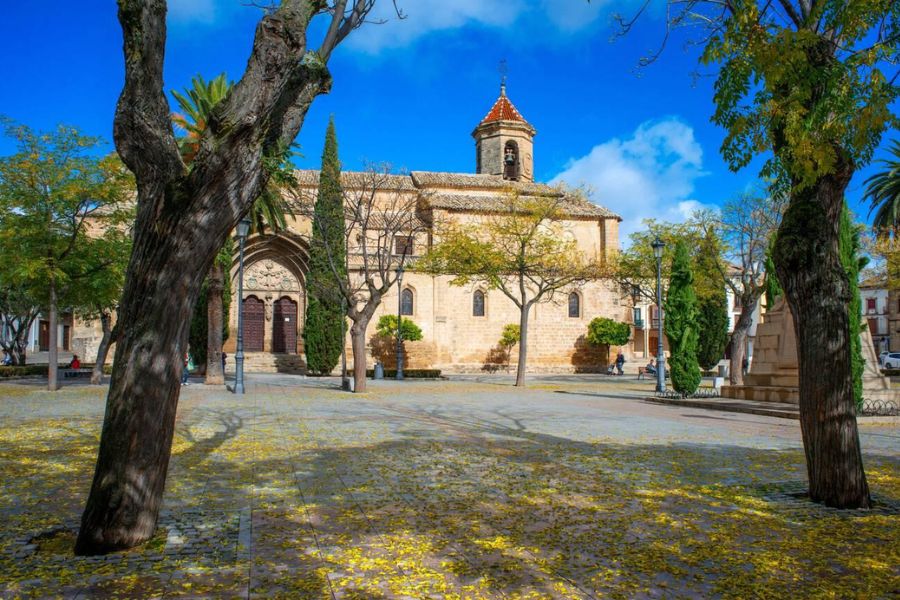
Exploring these towns made me appreciate Spain’s artistic and architectural legacy on a whole new level. If you’re after an authentic experience and want to dodge the crowds, you should bump Úbeda and Baeza to the top of your list.
Discovering Úbeda & Baeza: The Renaissance Heart of Andalusia
When I arrived in Úbeda and Baeza, it felt like I’d entered a living museum of Renaissance art and architecture. These twin cities in southern Spain hold a special place in Andalusia, not just for their beauty but for their deep history.
A Snapshot of UNESCO Recognition
Úbeda and Baeza joined the UNESCO World Heritage List in 2003. The towns have preserved their Renaissance layouts and grand monuments, offering a rare peek into 16th-century Spain.
As I wandered, I saw cathedrals, palaces, and public squares that seemed barely touched by time. It’s not just about the ornate buildings, though.
UNESCO’s recognition highlights how these towns keep the culture and history of Andalucía alive.

Travelers often skip them because they’re not on the main tourist trail. That’s honestly part of their magic.
The stone-paved streets and quiet plazas made me feel like I’d stumbled on a well-kept secret from Spain’s past.
Historical Ties with Sixteenth-Century Spain
Úbeda and Baeza’s story ties closely to the social and political shifts of the 16th century. As centers of Old Castile’s power, both cities thrived during the Renaissance, when new wealth from the Americas poured into Spain.
Noble families poured money into private palaces. Architects in Úbeda borrowed ideas from Italy, while Baeza saw new religious buildings and academic centers rise up.
This was a golden era for both towns. The new buildings showed off not just new money but new ideas—a time when education, art, and pride shaped every street and square.
I couldn’t help but notice how daily life and big history seemed to blend together here.
The Twin-Set: What Makes Each City Unique
Úbeda and Baeza sit just 9 km apart, but each offers something different.
In Úbeda, the grand Plaza Vázquez de Molina is ringed by palaces and churches, including the jaw-dropping Sacra Capilla del Salvador. I loved poking around its detailed stonework and bright chapels.

Baeza, on the other hand, feels more scholarly and calm. The old university and the Cathedral of Baeza give it a sense of tradition and learning. The slower pace invites you to wander and just take it all in.
Here’s a quick comparison:
| City | Famous For | Atmosphere |
|---|---|---|
| Úbeda | Palaces, Sacra Capilla del Salvador | Grand, Artistic |
| Baeza | University, Cathedral, Olive Groves | Tranquil, Scholarly |
Both towns form a Renaissance twin-set—each one with its own flavor, but together they tell a bigger story. Visiting felt like flipping between two chapters of a living book.
Architectural Marvels and Cultural Sites
As I wandered Úbeda and Baeza, I felt surrounded by stone, history, and artistic ambition. Every corner echoed with the Renaissance, but medieval lanes and old industries hinted at stories beyond the fancy facades.
Monumental Plazas and Palaces
One of my favorite moments in Úbeda was stepping into the Plaza Vázquez de Molina. The symmetry and golden stone create a calm, open space.
This square is lined with impressive buildings like the Sacra Capilla del Salvador—a church that honestly looks more like a palace.
Just across the way, the Palacio de las Cadenas stands tall. It was once a noble home and now serves as the city hall.
Its arches, ironwork, and coat of arms still show off the ambition of the city’s old elite. Even now, it’s hard not to be impressed.
Baeza has its own grand spot: the Plaza del Pópulo. It’s smaller but feels just as important, surrounded by the old city hall, fountains, and statues of lions.

Both towns use their plazas as stages for public life, trade, and celebrations. You can feel the history in the air.
The Legacy of Spanish Renaissance Architecture
As I roamed, I saw how Úbeda and Baeza transformed Renaissance ideals into stone. Italian architects influenced the style, but here it became distinctly Spanish—clean lines, carved details, and sunlit courtyards everywhere.
Key Features:
- Symmetry and balance
- Ornate facades made from local stone
- Elegant cloisters in churches and palaces
- Coats of arms for noble families
Andrés de Vandelvira designed many of these wonders. His work on the Santa María de los Reales Alcázares and the Cathedral of Baeza set the tone.
I admired how these buildings blended spiritual meaning with daily life. They invite both reflection and community.
Medieval and al-Andalus Influences
Renaissance art gets most of the attention, but I kept spotting hints of earlier times. Narrow streets twist between Renaissance squares, reminding me of the medieval city walls that still stand.
Down at street level, old paving stones and Islamic arches peek out from behind the grand facades. Many churches actually started as mosques during the al-Andalus era, and some towns still use Moorish water cisterns.
If you look closely at window grilles or doorways, geometric patterns and mudéjar tiles pop up, weaving two worlds together. That mix gives these towns their special character—both Spanish and Andalusian.
The Importance of the Textile Industry
It’s not all about art here. Úbeda and Baeza thrived thanks to a booming textile industry.
Local families made fortunes from wool, linen, and cloth. They used that wealth to fund schools, hospitals, and—most obviously—churches and palaces.
A stroll through Baeza’s quarter near the Puerta de Jaén still reveals traces of old textile workshops. Trade routes ran right through town, bringing in dyes, silk, and new design ideas from all over the Mediterranean.
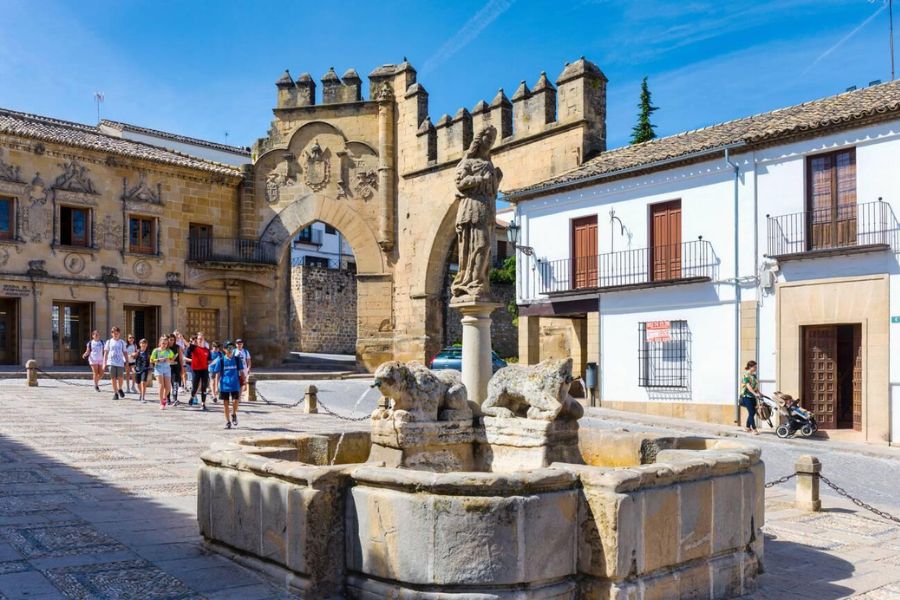
Craftsmanship mattered. Skilled guilds fueled strong economies and supported culture, education, and charity.
The legacy of these trades lingers, especially during festivals and in local tales. Standing among the old warehouses, I could sense how industry and art shaped the rise of these towns.
Living Tradition: Culture, Festivals, and Local Life
In Úbeda and Baeza, tradition and daily life blend together. The streets come alive with music, markets overflow with handmade art, and celebrations color the whole year.
Customs and Flamenco Rhythms
When dusk falls, I often hear the clapping and the haunting voice of flamenco singers drifting through the plazas. Here, flamenco isn’t just a show—it’s woven into life.
Locals gather in small bars or peñas, where guitarists and dancers keep old songs alive.
In both towns, traditional customs just blend into the day-to-day. Elderly neighbors swap stories on stone benches. Kids play impromptu games under orange trees.
It’s clear that family, laughter, and music are at the heart of Úbeda and Baeza.
Evening strolls can easily turn into street parties, with the smell of tapas mixing with song. Flamenco classes are easy to find for the curious, and some workshops let you try the basics of rhythm and dance.
Best Festivals and Celebrations
Úbeda and Baeza throw a good party. Semana Santa (Holy Week) is the big event, filling the streets with candlelit processions, dramatic music, and decorated statues.
The atmosphere is intense, but I felt welcomed right away—it’s easy to get swept up in the emotion.
Spring brings the Feria de San Miguel in Úbeda, with rides, open-air concerts, and bright market stalls. Dancers in traditional outfits spin to live music in the squares.

In Baeza, Corpus Christi stands out, with flower carpets and costumes rooted deep in local tradition.
Here’s a short list of annual events worth catching:
- Semana Santa (March/April)
- Feria de San Miguel (late September)
- Corpus Christi (May/June)
- Música en Segura (classical music, nearby, May)
Shopping and Artisan Craftsmanship
Shopping in these towns turned into a little adventure. Úbeda is known for its ceramics—deep green glazes and simple forms that carry stories from centuries ago.
Family-run pottery studios line the streets, and I even watched artisans shape clay by hand.
Baeza stands out for leather goods and beautifully woven textiles. Both towns have markets where you can buy olive oil, honey, and local sweets—easy gifts to bring home.
Most shops cluster near the main plazas, and shopkeepers love to share the stories behind their crafts.
If you’re up for it, some studios offer classes in pottery or leatherwork. Supporting these makers felt rewarding—and it’s a great way to take a bit of Andalusian tradition home.
Travel Essentials: Getting Around and Practical Tips
Getting around Úbeda and Baeza is pretty straightforward if you know a few tricks. The right bus, a good place to stay, and a little planning for day trips can make your visit a lot smoother.
Small things—like bus schedules, restaurant hours, or booking a tour in advance—can really help.
Transportation and Connections Across Andalusia
Reaching Úbeda and Baeza turned out to be easier than I expected. The closest big city is Jaén, about 45 minutes away by car or bus.
Buses connect both towns with Jaén, Granada, and even Madrid. I mostly used ALSA buses; they ran regularly and felt comfy. Bringing some cash or booking ahead online saved me a headache or two.
Renting a car is a good idea if you want to roam the olive groves and hilltop villages nearby. I found parking easiest in lots outside the old centers.

Both city centers are compact and walkable. I loved strolling between palaces and churches on foot.
To get between Úbeda and Baeza, you can grab a local taxi or hop on a short bus ride.
Tip:
| Route | Approximate Time | Notes |
|---|---|---|
| Jaén-Úbeda | 45 min (bus/car) | Regular departures |
| Úbeda-Baeza | 15 min (bus/car) | Frequent connections |
| Granada-Úbeda | 2 hrs (bus/car) | Few direct options |
Travel insurance is a smart move, just in case you hit a delay or something unexpected pops up.
Tourist Information and Accommodations
You’ll find tourist information centers right in the center of both Úbeda and Baeza.
I stopped by to grab local maps, pick up handy guides, and chat with staff about opening hours or hidden events.
The staff spoke some English—maybe not perfectly, but enough to help—and they handed out pamphlets in different languages.
They seemed genuinely happy to point out sights I might have missed otherwise.
When it comes to where to sleep, both towns offer everything from boutique hotels in old palaces to no-frills guesthouses.
My favorite? A stay in a converted Renaissance building, where I could look out over tiled rooftops and bell towers.
Staying at least one night in each town lets you soak up the quiet after the crowds leave.
Spring and fall get busy fast, so I always book ahead.
Most places include free Wi-Fi, breakfast, and plenty of tips for local guides or activities.
I always check reviews and keep an eye out for luggage storage, especially when I’m traveling on.
Dining, Nightlife, and the Art of Patience
Eating out in Úbeda and Baeza feels like a treat.
You’ll run into family-run taverns, classic tapas bars, and cozy restaurants on every corner.
Lunch kicks off around 2:00 pm, and dinner doesn’t really get going until close to 9:00 pm.
I had to adjust to the slower pace, so I’d grab snacks from bakeries or cafés to tide me over.
Some restaurants close for siesta between meals, so planning ahead helps.
Nightlife here stays pretty mellow but has its own charm.

Locals gather for drinks and conversation or take relaxed strolls through the plazas.
If you want to meet people or catch a late meal, wait until later in the evening.
Service moves slowly but with a smile—honestly, the laid-back rhythm is part of the whole experience.
Patience really matters here, and I found it made the food and atmosphere even better.
Local favorites to try:
- Salmorejo (cold tomato soup)
- Andalusian olives
- Churros with hot chocolate (for breakfast)
- Grilled meats and tapas made with local olive oil
Excursions and Guided Sightseeing
Baeza and Úbeda overflow with Renaissance history, and I found that a guided walking tour really brought the stories to life.
You can book local guides at the info centers or through your hotel.
Some tours try to cover both towns in a single day, but honestly, I liked exploring them separately and taking my time.
Day trips from either town are straightforward.
You can visit Jaén’s castle, hike in Sierra de Cazorla Natural Park, or follow an olive oil trail through nearby mills and taste the fresh-pressed stuff.
I always confirm tour times ahead—sometimes they need a minimum group.
If you want to explore at your own pace, you can rent cell phone audio guides.
Don’t forget water, a hat, and sunscreen, especially in summer.
Some buildings shut down mid-day, so start early or plan for a siesta during the hottest hours.
Guided excursions often include tickets and transportation, which makes everything easier.
Beyond the Twin-Set: Andalusia’s Rich Surroundings
Andalusia offers so much more than just Úbeda and Baeza’s Renaissance charm.
This region bursts with living history, wild nature, and endless day trip possibilities that really shaped my travels.
Connections to Córdoba, Seville, and Other Jewels
Just an hour’s drive away, Córdoba greets you with the amazing Mezquita.
When I wandered under its striped arches, I felt like I’d stepped into another era.
Seville pulled me in with the Giralda and those orange tree-lined streets.
Both cities pulse with flamenco and Andalusian culture, and I’d say they’re must-sees for anyone in southern Spain.
Salamanca and León, up in Castilla y León, gave me golden squares and a slower pace.
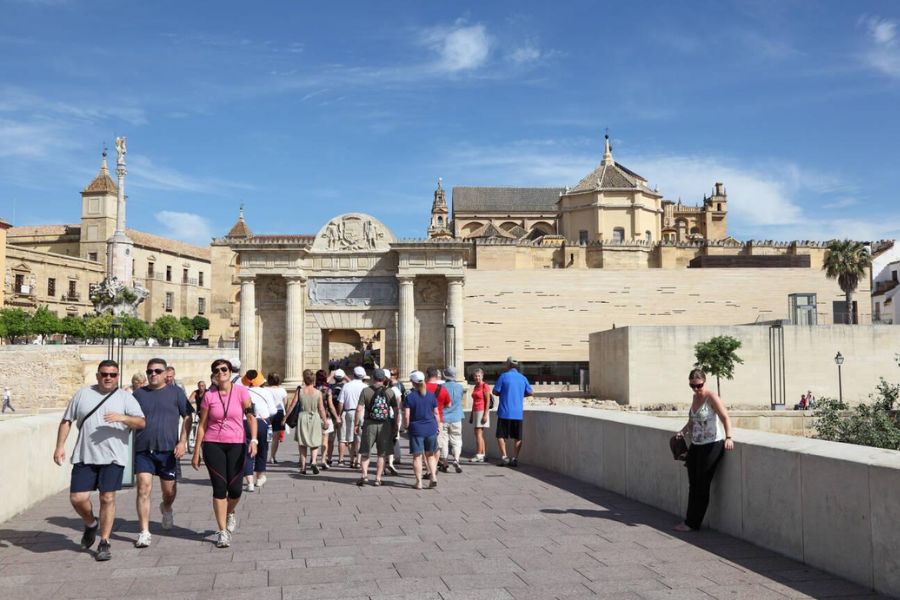
They’re a world apart from Madrid’s museums and modern buzz.
Each city has its own flavor—Seville’s wild festivals, Salamanca’s ancient university.
If you’re already in Úbeda, making a loop through these places adds so much depth to your trip.
Biodiversity: Flora and Fauna of the Region
Once you step outside the historic plazas, Andalusia surprises you with its nature.
Olive groves stretch across the hills between Úbeda and Baeza, their leaves catching the sunlight.
I spotted hoopoes and bee-eaters—those bright birds made every hike feel special.
Near Sierra de Andújar, wild deer roam, and if you’re lucky, you might even glimpse the endangered Iberian lynx.
Oak and pine forests offer much-needed shade from the sun.
In spring, wildflowers blanket the fields.
One afternoon, I just wandered, chasing butterflies and watching the sun dip over golden hills.
From rare birds to thick woods, the region’s biodiversity colored every adventure.
Day Trips: From Segovia to Extremadura
Whenever I wanted a change of scenery, day trips opened up new sides of Spain.
Segovia’s Roman aqueduct and storybook Alcázar are just a train ride from Madrid, which made it an easy stop after leaving Úbeda.
In Extremadura, I spent hours wandering Mérida’s Roman ruins, which honestly rival anything in Italy.
Salamanca’s baroque squares, León’s Gothic cathedral, and even a quick hop to the Balearic Islands—Majorca or Ibiza—kept things fresh.
Train and bus connections from Madrid or Seville worked well for most places.
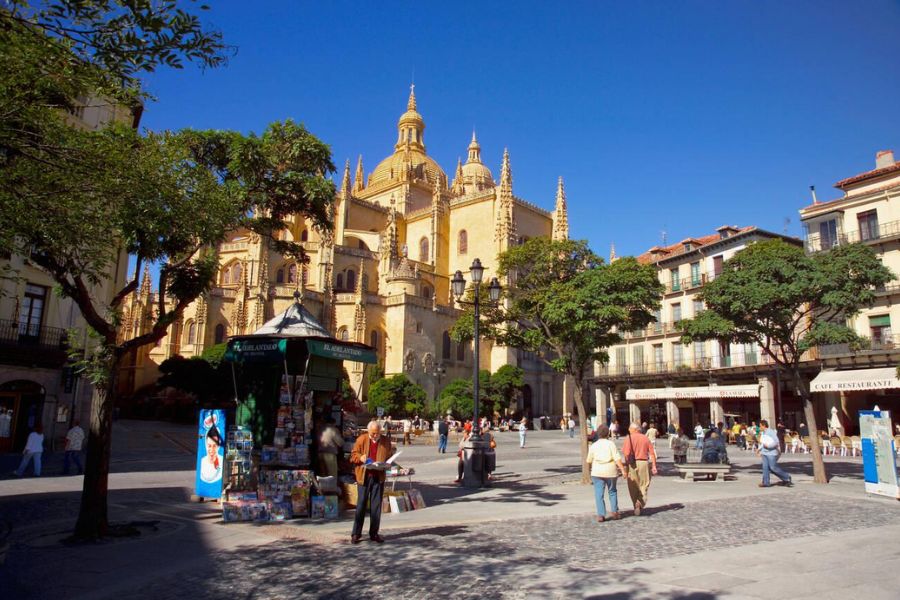
If you’re up for something less touristy, Extremadura’s birding spots and old towns are worth the journey.
Every day trip, whether near or far, added another layer to my Andalusian adventure.
Navigating Social Experiences
Exploring Úbeda and Baeza isn’t just about pretty buildings and old streets.
Connecting with locals, learning traditions, and seeing daily life up close really reveal what makes these places tick.
Understanding Local Social History
When I wandered through Úbeda’s Plaza Vázquez de Molina or Baeza’s winding alleys, I started to notice how centuries of Muslim, Christian, and Jewish history shaped the towns.
The buildings reflect this mix—Moorish walls, Christian chapels, Renaissance palaces.
Locals hold onto festivals and traditions.
During Semana Santa (Holy Week), processions and music fill the streets.
In the cafés, I watched neighbors linger over coffee or tapas, always ready for a long chat.
I learned that respect and friendliness matter a lot here.
A warm greeting or honest curiosity opened doors for me, whether I was watching olive harvests or joining small-town celebrations.
Getting to know these customs made my journey deeper and helped me feel at home with the people I met.
Discrimination: Insights and Support
Úbeda and Baeza feel pretty welcoming, but let’s be honest—no place gets it all right.
Locals shared stories with me about how social class, and in the past, religion, shaped everyday life here. You can still sense the old echoes of the Reconquista and those later shifts in the way people think about identity and difference.
These days, Andalusia takes pride in its diversity. Still, you might notice a few stereotypes or misunderstandings hanging around.
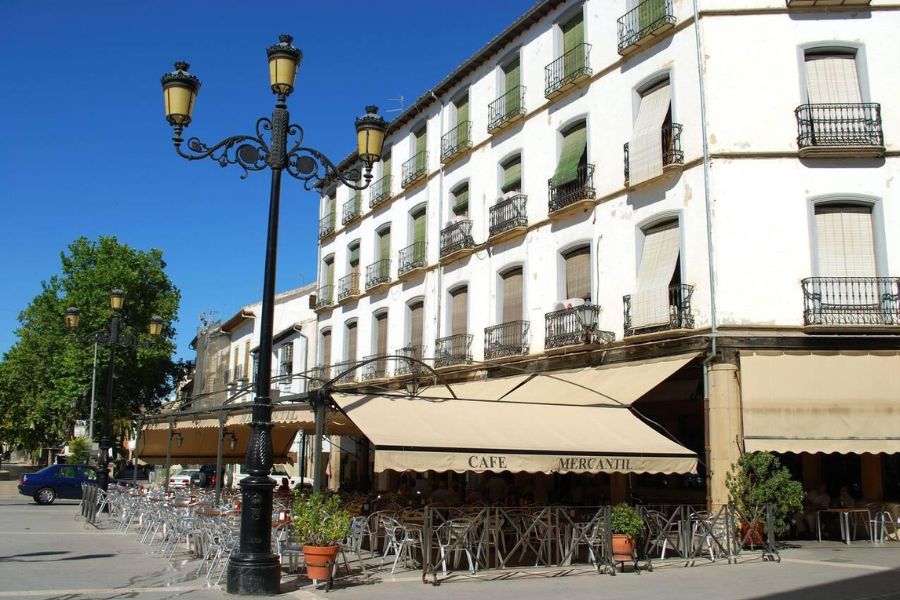
I came across support networks like cultural centers and advocacy groups that try to help newcomers. When I visited, I saw firsthand how these communities push back against bias and give practical support.
If you’re traveling and run into prejudice—or if you’re just curious about the social dynamics—you can always check in at tourism offices or reach out to community organizations.
People usually react positively when you show respect and a genuine interest in understanding both the history and what’s happening now.

